Here at the front end of February, our yards, back and front, are looking a mite shopworn and forlorn, dressed in sodden grays and browns, rather than the riot of colors they show in spring, summer, and into even late autumn. The ground out front, and what little turf-grass we have, is covered with leaves—mostly pin oak and sweetgum, with some birch for good measure. Out back is a mix of maple, oak, ash, redbud, persimmon, and a few more.
This can be a challenging season for the caretakers of natural, wildlife-friendly yards, because, well, they just aren’t so pretty any more to most passing eyes. The plants of summer are looking tattered and bedraggled. Flowers have given way to spiky seed-heads or just bare stems, often fallen over and tangled. Passers-by who sometimes cross the street in summer to show their disapproval of our rowdy pollinator- and bird-filled premises will now occasionally stop and scowl openly at the messy stands of plant stems and leaf-cluttered ground. We have signs explaining exactly why we keep leaves down and stems up, but for people that still believe lawns should be modeled after golf courses, our explanations likely don’t pass muster.
If we happen to see folks unhappily perusing our domain, we could, I guess, go out and tell them about the butterfly and moth larvae and pupae likely slumbering in the leaf litter. We might be able to show them plant stems that are hosting bee nests or point out the goldfinches feeding happily on the seeds of purple coneflowers and other treasures that they actually seem to prefer to the bird seed we buy and keep offering them throughout the cold months. With our help, they might notice the small birds of various species—native sparrows, chickadees, juncos, house wrens, titmice, Carolina wrens and others, that take full advantage of our clumpy winter plants for cover and windbreaks.
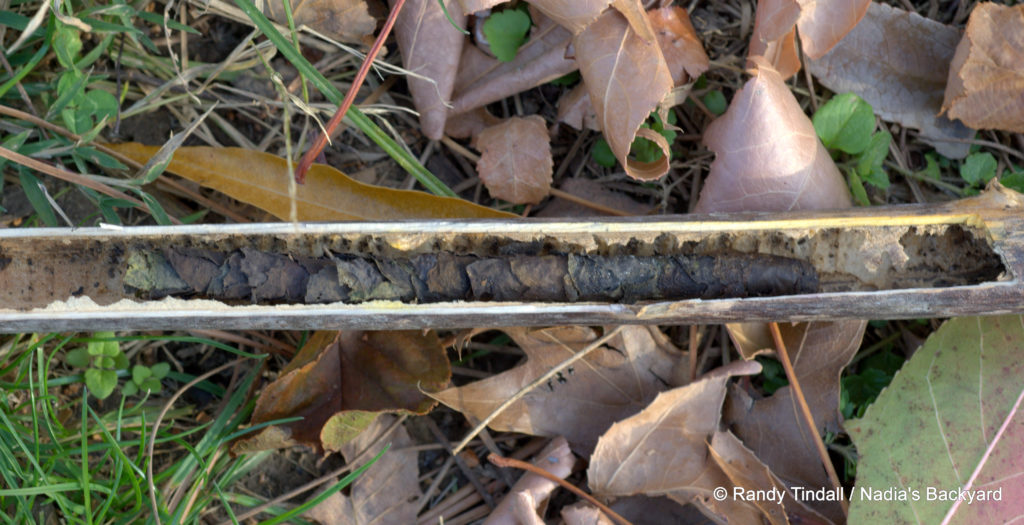
(Cells had already hatched. FYI.)
We could do all that, I suppose, but we don’t, preferring to engage with the people who stop by to ask questions, read Nadia’s signs identifying the different native plants and, sometimes, tell us how much they enjoy our yard on their daily walks.
Now don’t think that we never do ANY tidying at all! We do, especially after our milkweed forest has died out above-ground, and its various inhabitants have gone elsewhere (or at least out of sight). Dead milkweed stems are especially unpleasing to most human eyes, so we pull or cut them, carry them into our backyard, which is protected by a privacy fence, and stack them carefully in a corner, in case they are sheltering insect young, eggs or larvae under their brown, raggedy exteriors. We sometimes clean up other fallen stems, too, and pile them alongside the milkweeds, to wait for weather warm enough to trigger the awakening of whatever might be living in them. We always make sure to leave enough plant material to provide cover and shelter in the yard, though, and we leave almost all the seeds the birds like.
Because, you see, we have chosen a different standard of beauty than most yard-viewers have been conditioned to see since Frederick Law Olmstead, born 200 years ago this year, decided that proper urban landowners should emulate the British upper classes and public gardens and create yards, especially front yards, of grass, a tree or two and a uniform landscaping style. I won’t go into the failings and merits of the conventional lawn, because we have all been exposed to these arguments before, and we have mostly chosen sides by now, I reckon. But I will point out that at least there is now a competing paradigm that is becoming increasingly acceptable. Those on both sides of this divide eye their opponents’ yards with varying degrees of tolerance and/or distaste, and sometimes open hostility, but there is now a growing opportunity to try different options without ending up with fines and legal hassles.
We manage our property for biological diversity—life—and not necessarily societal acceptance, although we are always open to suggestions from our neighbors, who have been tolerant and kind. We try to maintain the wildest bits behind our backyard privacy fence, where we have things like a dead log or two on the ground, a couple of standing snags, a small brushpile for birds and rabbits, two compost bins, some broken plant pots on the ground as shelters for small things like frogs and toads, a rudimentary rain garden, and so on. The benefits for us and our “guests” have been many.
Nadia and I find quite a lot of beauty and joy in observing the complex messiness of nature across the seasons, as our yard changes drastically in form, color, and content throughout the year. Plants come and go, with or without showy blooms. Birds, insects, and other wildlife wander in and out of our lives at will, generally finding something of value here during their visits—food, water, shelter, relative safety, even places to homestead and reproduce.
Those under Olmstead’s continuing and considerable influence will see our yard as an eyesore in the the neighborhood. But, under the apparent ruin and disorder of our winter yard, we have learned to see the seeds of renewal and the natural slumbering of what we have helped to preserve, until the warmth comes again to urge it forth.

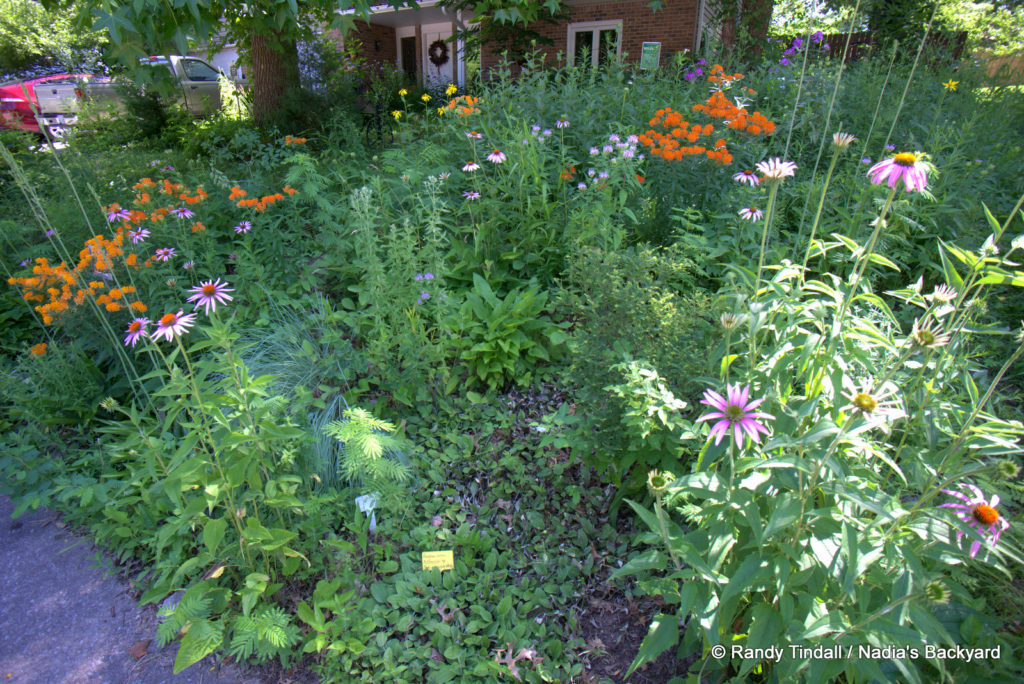
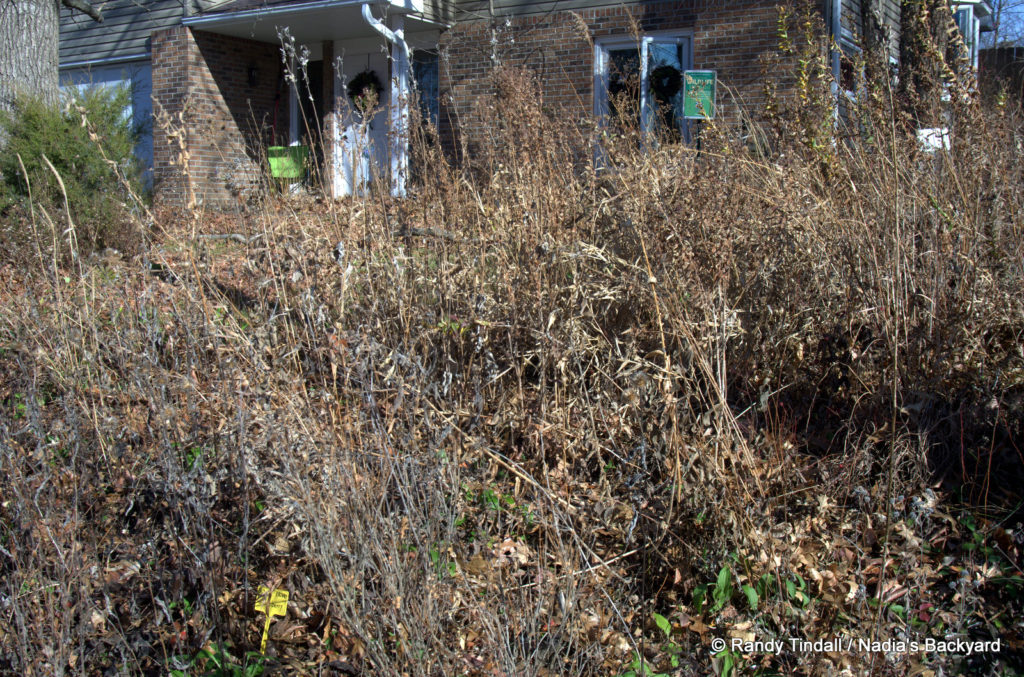
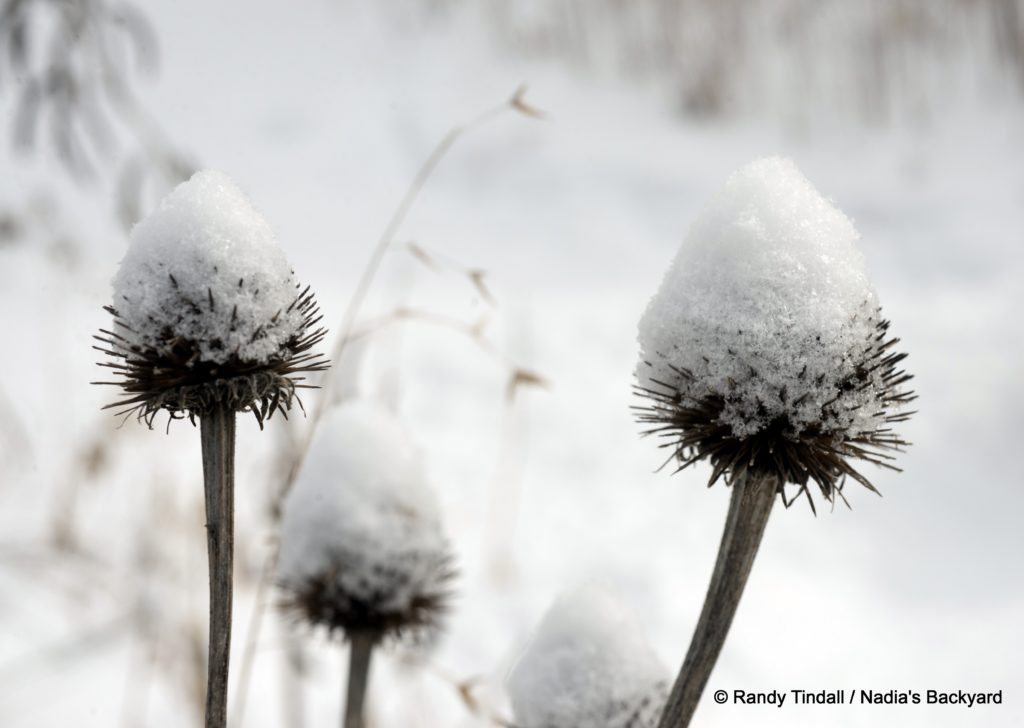

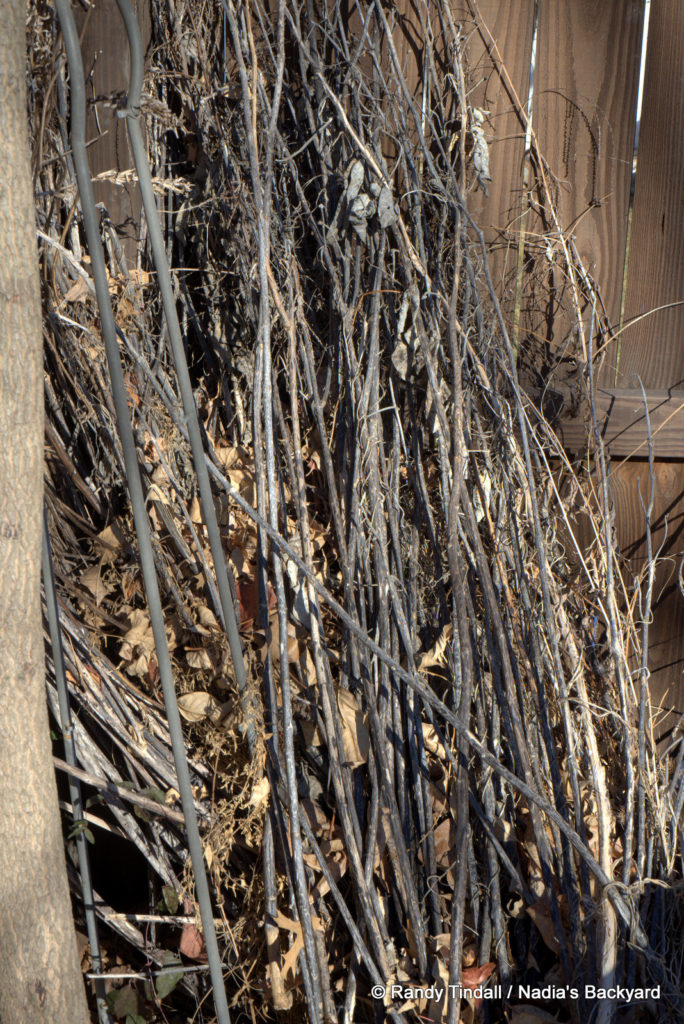
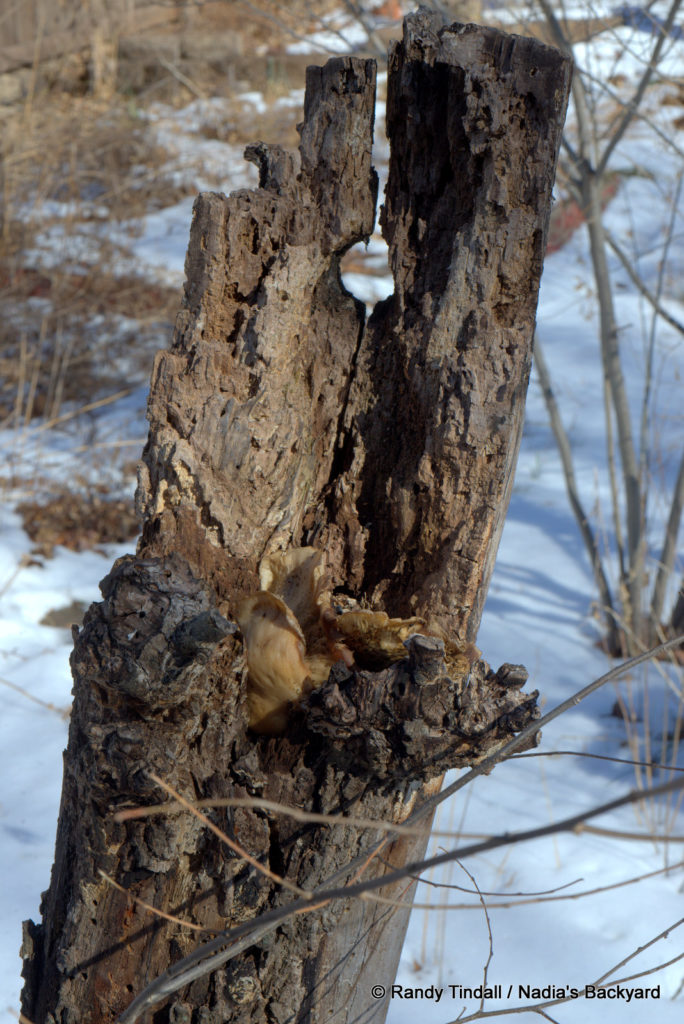
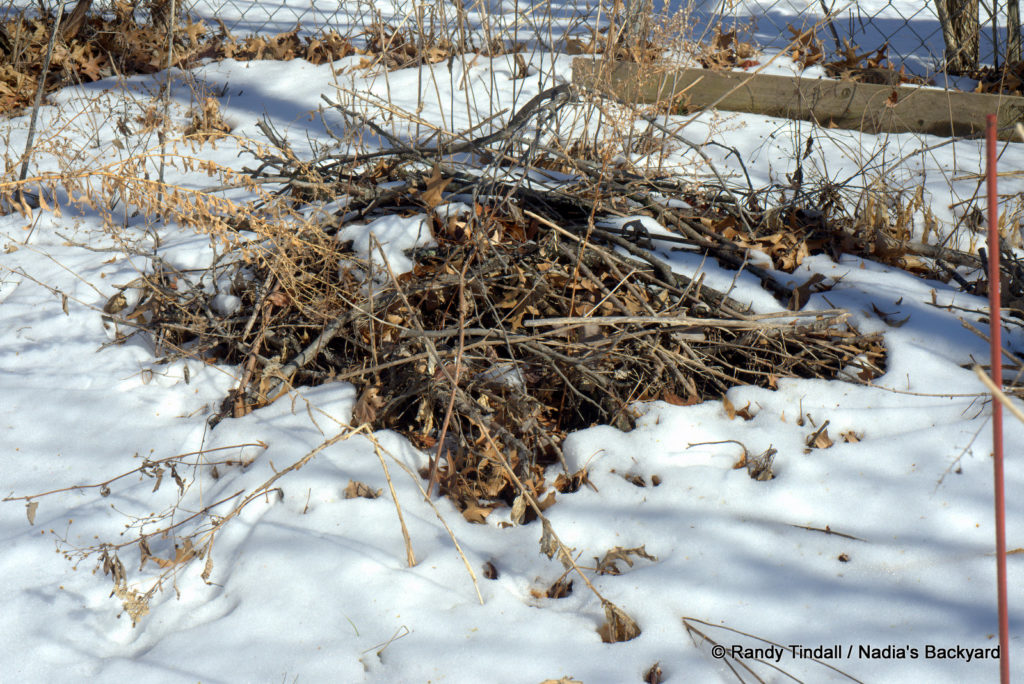
Hey!! I would love to print this as a factsheet for urban native plant gardeners 🙂
Go for it! After all, it’s your yard!